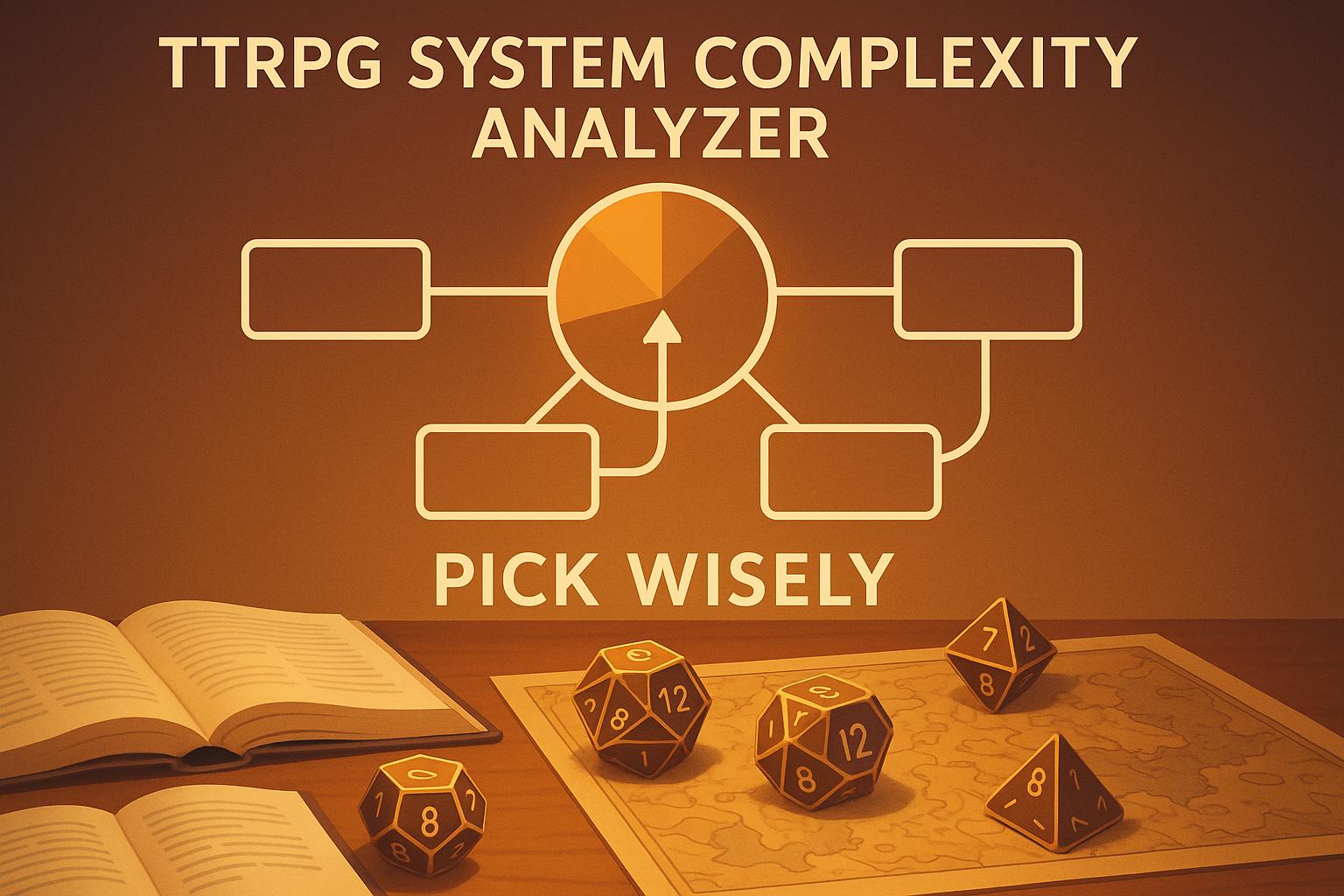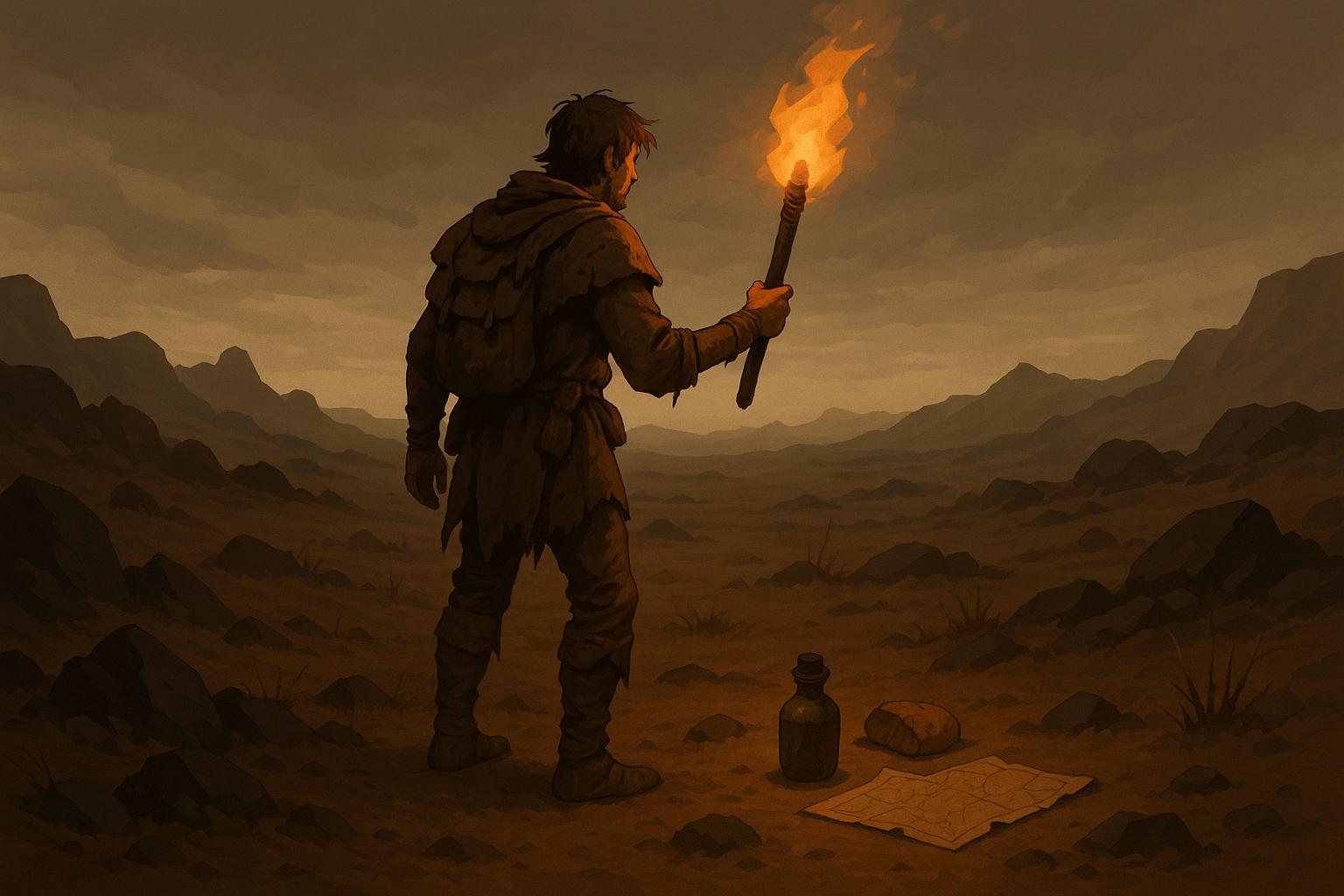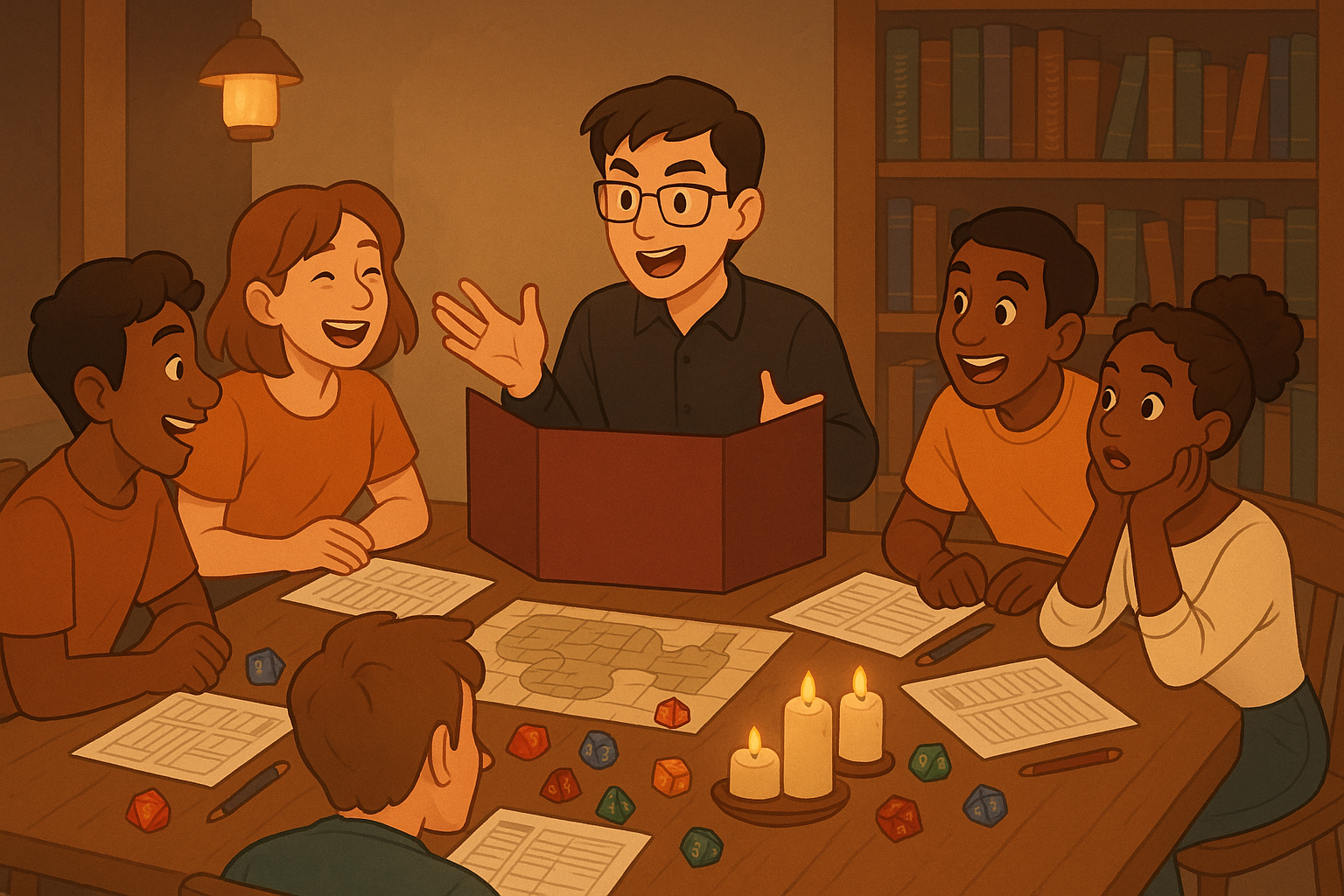Crafting a standout tabletop RPG (TTRPG) character is all about blending story, personality, and game mechanics. Here's how to make your character unforgettable:
- Backstory: Tie your character’s history to their skills and motivations. Think about key life events and how they fit into the game world.
- Personality: Add quirks, habits, and values that make roleplaying fun and engaging.
- Appearance: Use signature features, like a scar or unique clothing, to make your character visually distinct.
- Goals: Set clear short-term and long-term objectives to drive their actions in the game.
- Mechanics: Align abilities, class, and race with your character’s story for a cohesive build.
- Growth: Plan how your character will evolve over the campaign, from skills to relationships.
What Makes a Good D&D Character?
Step 1: Writing Your Character's Story
Create a rich character story by focusing on their past, motivations, and connections to the world. These elements provide depth for roleplay and story hooks.
Building Your Character's Past
Your character's history plays a huge role in defining who they are. Think about key moments in their life:
| Life Stage | Key Elements to Consider |
|---|---|
| Early Years | Family dynamics, childhood environment, influences |
| Coming of Age | Important decisions, mentors, learned skills |
| Recent History | Major successes, failures, relationships |
| Current Status | What’s happening now that leads to adventure |
Make sure their backstory explains their abilities. For example, if they’re great at survival skills, maybe they grew up in the wilderness or served in a frontier outpost.
Setting Clear Character Goals
Characters with clear objectives feel more dynamic and purposeful. Focus on:
- Primary Motivation: What drives your character at their core?
- Short-term Objectives: Goals tied to the current adventure.
- Long-term Ambitions: Broader dreams that could span multiple sessions.
Instead of vague goals like "gain power", aim for something specific, like "reclaim my family’s lost castle" or "uncover the truth about my mentor’s mysterious disappearance."
Fitting Into the Game Setting
Work with your Game Master to ensure your character feels like a natural part of the game world. Consider these aspects:
1. Local Connections
Build relationships with significant locations and NPCs. This gives your Game Master easy ways to tie your character into the story.
2. Cultural Alignment
Match your character’s background to the setting’s cultures and traditions, considering:
- Religious beliefs
- Social norms and etiquette
- Political ties
- Trade or business dealings
3. Historical Context
Fit your character into the timeline of key world events. Think about how these moments shaped their life and outlook. This makes your character feel grounded within the game world rather than randomly placed.
Collaborating with your Game Master during this process ensures consistency and opens doors for engaging storylines. With a solid backstory, you’ll be ready to dive into your character’s unique traits and gameplay mechanics.
Step 2: Adding Character Details
Once your character's story is set, it's time to fine-tune their personality and appearance to make them stand out in your game.
Choosing Personality Traits
Your character's personality is what makes them come alive during gameplay. Aim for a mix of traits that feel real and offer plenty of roleplaying opportunities.
| Trait Category | Examples | Roleplaying Impact |
|---|---|---|
| Core Values | Honor, Ambition, Loyalty | Drives key decisions |
| Quirks | Speaks in riddles, Collects trinkets | Makes the character unforgettable |
| Social Attitudes | Suspicious of authority, Protective of allies | Shapes interactions with the group |
| Personal Habits | Morning meditation, Never breaks promises | Adds depth to roleplay |
Pick traits that:
- Open doors for character growth and tension.
- Provide consistent roleplay hooks.
- Make your character stand out from the crowd.
Avoid traits that could disrupt the group dynamic. Instead, focus on characteristics that spark interesting stories and keep the team working together.
With the personality locked in, it’s time to create a visual profile that makes your character instantly recognizable.
Creating Physical Descriptions
A strong physical description helps others picture your character and adds to the roleplay experience.
Start with these three key elements:
1. Signature Feature
Choose one standout detail that defines your character:
- A scar with a backstory.
- Unusual eye color or unique markings.
- A distinctive style of clothing or armor.
- A weapon or tool they’re never without.
2. Body Language and Voice
Develop mannerisms that reflect their personality:
- Their posture and how they move.
- Specific gestures or reactions.
- Speech habits, like a favorite phrase or way of speaking.
- An accent or dialect that adds flavor.
3. Visual Impact
Make sure each feature has purpose:
- Connect it to their background.
- Use it to reflect their personality.
- Leave hints about where their story might go.
Keep descriptions simple but memorable. Avoid overloading with details and focus on elements you can bring to life during gameplay. This way, your character feels consistent and engaging every session.
Step 3: Building Game Mechanics
Once you've nailed down your character's story and personality, it's time to bring them to life with mechanics that fit their concept.
Mixing Classes and Races
Combine classes and races creatively to reflect your character's background and ambitions.
| Build Type | Mechanical Perks | Character Representation |
|---|---|---|
| Multi-class Combinations | Access to varied skills | Highlights growth and adaptability |
| Race/Class Synergy | Boosts core abilities | Ties into cultural heritage |
| Subclass Selection | Unlocks specialized traits | Showcases personal focus |
When making these choices, think about:
- How your character's abilities tie into their past experiences.
- Mechanical options that emphasize their defining traits.
- Opportunities to create unique tactical strategies.
These decisions set the stage for selecting skills and gear that align with your character's personality and goals.
Selecting Skills and Equipment
Pick skills and equipment that tell your character's story and align with their objectives.
For skills, consider:
- Their upbringing and training.
- Hobbies or interests that shaped them.
- Life experiences before they started adventuring.
- Aspirations and current motivations.
For equipment, focus on:
- Items with personal or narrative significance.
- Gear that fits their profession.
- Cultural influences that shape their choices.
These selections help flesh out your character and make them feel more real.
Using Advanced Rules
Optional rules can add extra layers of depth to your character.
1. Background Customization
- Choose custom skill proficiencies.
- Opt for alternative starting equipment.
- Add unique background features.
2. Variant Rules
- Explore alternative class features.
- Adjust ability scores in different ways.
- Select feats tailored to your character.
3. Character-Specific Mechanics
Work with your Game Master to create mechanics that highlight your character's individuality:
- Personal combat styles.
- Unique approaches to spellcasting.
- Modifications to equipment that reflect their story.
These advanced options allow you to fine-tune your character, making them stand out in gameplay.
sbb-itb-b8b00a5
Step 4: Playing Your Character
Now that you've nailed down your character's stats and appearance, it's time to breathe life into them during the game.
Speaking as Your Character
Give your character a voice that reflects their background. Think about:
- Education and vocabulary: Do they use technical jargon or simple, straightforward language?
- Accent or dialect: Is there a regional flair to their speech?
- Tempo and tone: Are they quick and lively, or measured and calm?
- Catchphrases or quirks: Do they have sayings or habits that set them apart?
| Speech Element | Traits | Examples |
|---|---|---|
| Vocabulary | Academic background | Technical terms, scholarly references |
| Tempo | Personality type | Quick and energetic vs. slow and thoughtful |
| Mannerisms | Personal history | Military formality, street slang |
Using Character Flaws
Flaws can make your character more engaging, especially when revealed at the right moments. Balance their impact by showing growth over time and ensuring they don't disrupt group dynamics.
Turn weaknesses into storytelling opportunities by:
- Highlighting flaws during critical moments.
- Using them to fuel personal story arcs.
- Creating tension that deepens group interactions.
These imperfections can lead to more meaningful connections with other players.
Interacting with Other Players
Build relationships that add depth to the game. This requires active listening and flexibility to adapt to the evolving story.
Group Chemistry and Storylines
- Build natural bonds between characters.
- Collaborate to develop shared storylines.
- Support other players' character moments.
- Expand on existing plot threads.
A simple relationship tracker can help keep things organized:
| Character | Connection Type | Shared History | Current Dynamic |
|---|---|---|---|
| Party Members | Professional | Recent adventures | Growing trust |
| NPCs | Personal | Background ties | Evolving relationships |
| Antagonists | Conflicting | Past encounters | Developing tensions |
Step 5: Character Development
Once you've defined your character's traits and mechanics, it's time to focus on how they grow and change throughout the campaign.
Planning Character Progress
Think about how your character will evolve over time. Break this down into short-term goals and long-term milestones:
Short-term Goals
- Upgrade specific skills or abilities
- Acquire better equipment
- Strengthen relationships with NPCs
- Complete personal objectives or side quests
Long-term Growth
- Undergo major transformations or shifts in personality
- Advance to new classes or abilities
- Align with factions or groups in the game world
- Work toward legacy-level achievements, like founding an organization or leaving a mark on the world
| Timeline | Focus | Goals |
|---|---|---|
| Next 1-2 sessions | Immediate growth | Master a new combat skill or technique |
| Mid-campaign | Character evolution | Build alliances with key groups |
| Campaign end | Legacy achievement | Establish a lasting legacy, like a guild or school |
Responding to Game Events
Game events should naturally shape your character’s journey. Use these moments to reflect on and adjust both their personality and gameplay mechanics.
Personality Development
- Shift beliefs or values after major in-game revelations
- Develop new fears, motivations, or ambitions
- Build bonds with other characters through shared challenges
- Change behavior based on pivotal moments in the story
Mechanical Growth
- Pick abilities or skills that tie into recent experiences
- Learn techniques from allies or mentors
- Adjust combat strategies to handle recurring threats
- Upgrade equipment to match new challenges
These changes can create a dynamic, evolving character arc that feels tied to the story.
Creating Personal Storylines
Work with your Game Master to weave your character's personal goals into the larger campaign. This collaboration can make the story richer for everyone.
Story Integration
- Tie elements of your backstory into current events
- Suggest side quests that explore your character's personal goals
- Build meaningful relationships with NPCs
- Ensure your character has stakes in the campaign's outcomes
| Story Element | Integration Method | Impact on Campaign |
|---|---|---|
| Personal Quest | Run parallel to main plot | Adds depth to the game world |
| Character Relationships | Regular interactions with NPCs | Creates engaging story opportunities |
| Background Threads | Introduce as periodic beats | Enriches the overall narrative |
Conclusion: Making Better TTRPG Characters
Creating great TTRPG characters is all about finding the right balance between story and mechanics. A thoughtfully designed character not only enhances your own fun but also adds depth to the group's experience through meaningful interactions and contributions to the story.
To craft a standout character, focus on blending key elements:
- A compelling backstory that naturally fits into the campaign world
- Clear motivations driving their actions
- Defining personality traits that open up roleplay opportunities
- Mechanics that align with the character's concept
When these pieces come together, your character's abilities will feel like a natural extension of their background, and their personality will shape how they interact in the game.
Quick Tips for Better Characters
Here’s a quick guide to turn these ideas into action:
| Aspect | Focus Area | How to Apply It |
|---|---|---|
| Background | Personal History | Tie 2-3 life events to the campaign's themes |
| Mechanics | Character Build | Pick skills and abilities that reflect their past |
| Roleplay | Voice & Mannerisms | Create 1-2 signature phrases or gestures |
| Growth | Development Path | Plan how they'll evolve every 3 sessions |
Keep these three principles in mind:
- Believability Over Complexity: A simple, well-thought-out character with clear motivations is often more engaging than one with an overly intricate backstory.
- Mechanics That Match the Story: Your character's abilities should feel like a natural result of their history. For instance, a character with a sailor's past might focus on navigation or survival skills.
- Team Dynamics: Build a character that adds to the group's goals and complements the abilities of other party members.
For more tips, check out resources like the TTRPG Games Directory, which offers tools and guides for creating characters across different game systems.
Start with these basics, and let your character grow and evolve naturally through the story and gameplay.
TTRPG Games Directory

Looking to expand your character creation options? The TTRPG Games Directory is a go-to resource for discovering a wide range of tabletop role-playing game systems, from timeless classics to lesser-known indie gems. Each entry provides detailed information about the game's mechanics and themes, making it easier to find a system that suits your style.
Here are some categories to guide your search:
| Game Style | What to Look For | Why It’s Useful for Character Creation |
|---|---|---|
| Story-Driven | Games with rich background systems | Allows for deep, narrative-focused character growth |
| Mechanically Rich | Systems with detailed customization options | Enables unique ability combinations and builds |
| Genre-Specific | Settings that align with your character idea | Provides thematic abilities and role possibilities |
The directory makes it simple to explore games based on their standout features, helping you find systems that align with your character-building preferences. Whether you're drawn to intricate mechanics or immersive storytelling, these games offer unique ways to bring your character ideas to life.
Have a favorite TTRPG? You can contribute by submitting it to the directory, which maintains a curated list of highly-rated systems. This ensures you'll always have quick access to games that spark creativity and inspire fresh character concepts.
Dive into the directory to find the perfect system for crafting personalized, standout TTRPG characters.


